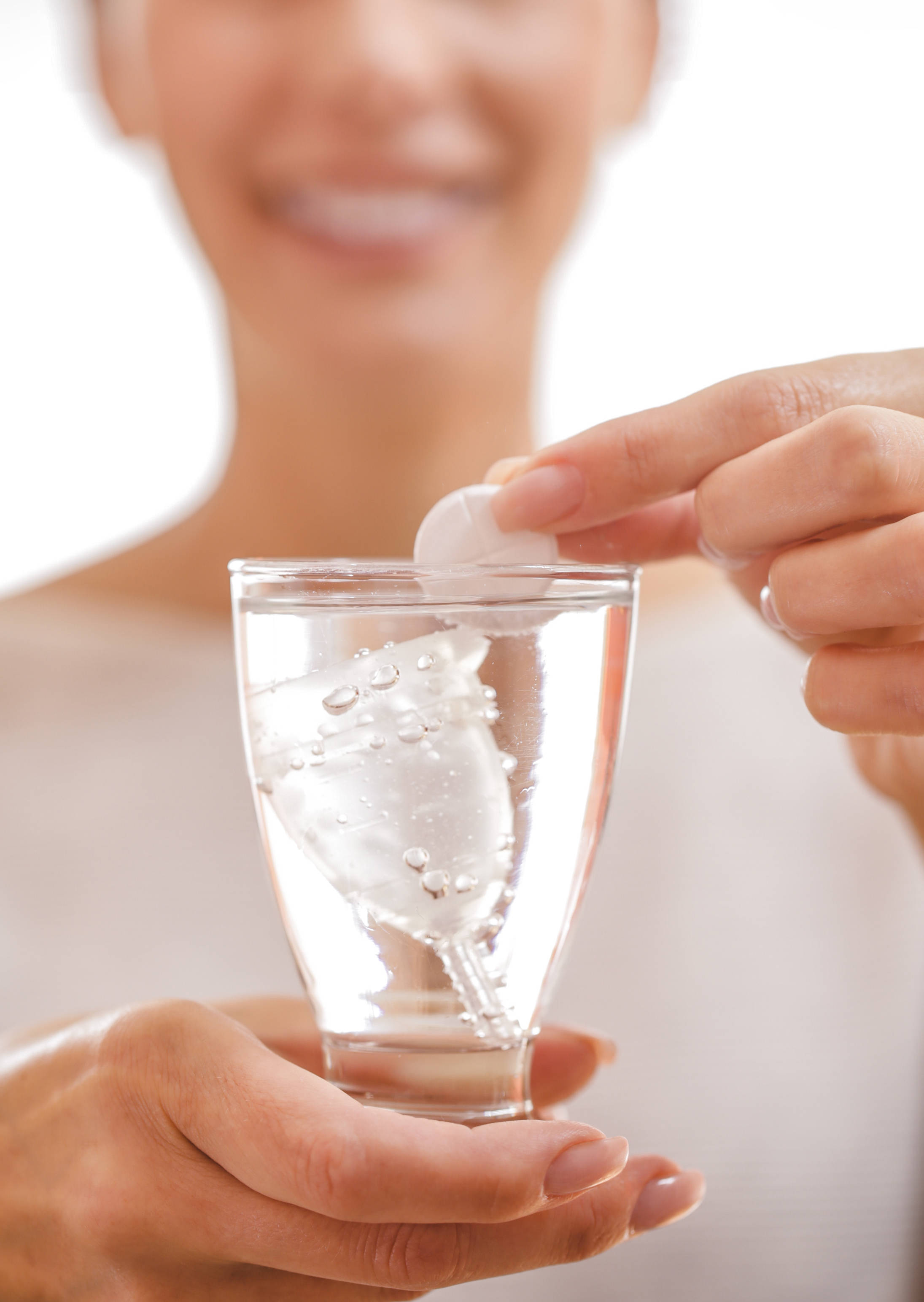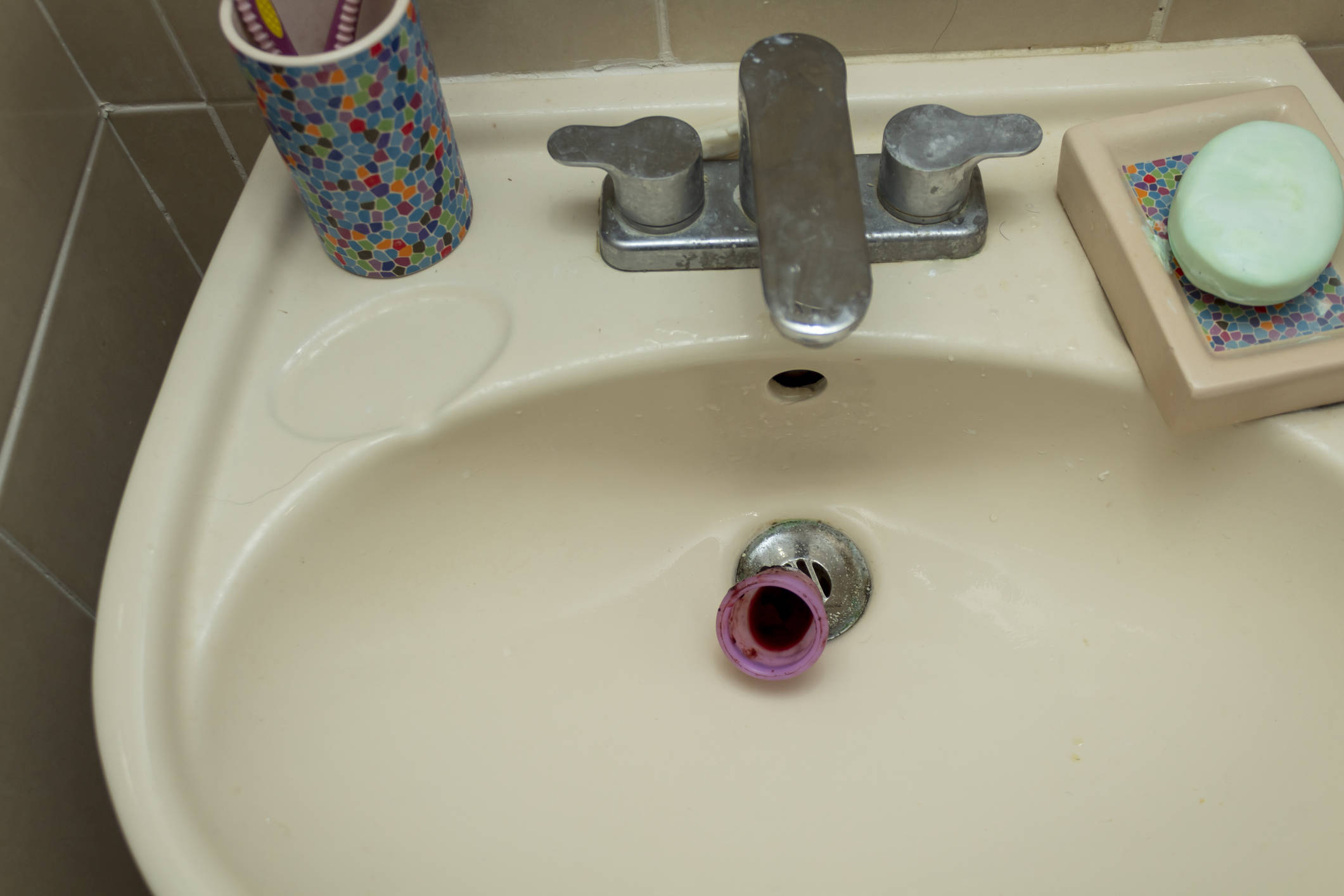Does your daughter want to use a menstrual cup? This is the best way to guide her and teach her how it works.

When your daughter gets her first period, it's important to make sure she has good information and support to face this new stage of her life responsibly and hygienically.
With this in mind, the inevitable question is: Which menstrual product should you use? The key here is guidance, comfort, and a fit for your lifestyle.
Today, there are more options than ever for menstrual products, including sanitary pads in different sizes and tampons with different types of applicators. There are also menstrual cups, which are devices inserted into the vagina to collect period blood. Menstrual cups have become more popular in recent years, likely because they generate less disposable waste than traditional products.
These are some of the questions that may arise when considering using a menstrual cup:
What is one and how does it work? Menstrual cups are similar in design to cervical caps (which are contraceptive methods). They are small cups made of materials such as silicone, latex, or rubber. They have a flexible rim, and some have a stem at the bottom for easy removal.
To insert a menstrual cup, fold it and gently insert it into the vaginal canal. Once inside, it expands. The cup collects menstrual flow and can hold between 10 and 28 mL of fluid at a time. Depending on the flow, it can be left in place for up to 12 hours; tampons, on the other hand, should not be left in for more than 8 hours without changing.

Reference image Photo: iStock
After emptying, the cup should be washed and disinfected according to the manufacturer's instructions.
How is a menstrual cup different from a sanitary pad or tampon? “Unlike pads or tampons, menstrual cups are typically reusable,” explains Dr. Anne Smith, a Yale Medicine ob-gyn specializing in adolescents. She adds that, unlike tampons or pads, which absorb blood , “menstrual cups collect it.” After use, the blood is emptied into the toilet and the cup is cleaned.
Dr. Jillian LoPiano, an ob-gyn and medical director of Wisp, notes that menstrual cups may require a steeper learning curve than pads and even tampons. “Insertion and removal can be tricky at first, especially for beginners,” she says. In particular, they can be harder to remove without leaking at first.
When can teens safely use a menstrual cup? Sometimes parents or teens themselves are concerned about using products that are inserted into the body—such as tampons or menstrual cups— before having sex. But Dr. Smith assures, “It's absolutely safe to use tampons or menstrual cups, even if you've never been sexually active.”
And while some people believe they should start with pads before moving on to other products, Dr. Suzanne Bovone, a board-certified ob-gyn in San Jose, California, says that “teens can safely use menstrual cups from their first period if they choose.”

Photo: iStock
One of the biggest benefits of menstrual cups is that they're more convenient than other products. “Cups can stay in place longer than tampons, usually between 8 and 12 hours,” says Dr. Smith. They can also hold more blood than other products, which is helpful for teens with heavy flows, as they don't need to change them as often and can participate in school or sports with less worry about leaks.
Dr. Bovone notes that many teens also find the cup more comfortable compared to other products. “Many report less cramping and less odor,” she notes.
Other benefits include:
- Profitability: It is purchased only once and can last for several years.
- Environmentally friendly: produces less plastic waste.
- Greater protection against leaks when used correctly.
- More comfortable for some people.
- It does not alter vaginal pH or cause dryness or irritation.
Although menstrual cups are generally safe, Dr. Bovone cautions against a few points: as with tampons, leaving them in too long can lead to toxic shock syndrome, so they should be removed after a maximum of 12 hours. Cleanliness is also essential to prevent infection: wash the cup after each use and sterilize it after each cycle.
Make sure it fits properly and is comfortable; if it doesn't, it can put pressure on the urethra and cause discomfort when urinating.
As with any medical device, it's possible to experience an allergy to materials such as latex or silicone. If you notice redness, swelling, or irritation, discontinue use and consult your healthcare professional.
Tips for teens who are just starting out As with tampons, it may take time to get used to the feel of the cup, and that's normal. "There's a learning curve when you first start using menstrual cups," says Dr. Smith. "It may take a little longer than with tampons to get comfortable."
Cups often come with detailed instructions, and there are also many online resources for your daughter to consult while learning how to use them. “ Using online resources and manufacturer guides not only makes use easier, but also fosters a culture of body awareness and education, which are critical for adolescent health,” says Dr. LoPiano.
As Dr. Smith explains, cups come in different sizes, and each brand varies in shape and other features. “Start with a small size and go up if needed based on flow,” she suggests. A teen can try different brands and shapes until she finds the most comfortable one.

Photo: iStock
If you're trying the cup when your flow is very light, or if you're not on your period, a little lubricant can help. "You can use water or a water-based lubricant to make insertion easier if your flow is very light, and to avoid irritation," says Dr. Bovone.
Finally, if your daughter has persistent difficulties using the cup, it's perfectly acceptable to consult a gynecologist for guidance, or to try other menstrual products that better suit her needs.
eltiempo



%3Aformat(jpg)%3Aquality(99)%3Awatermark(f.elconfidencial.com%2Ffile%2Fa73%2Ff85%2Fd17%2Fa73f85d17f0b2300eddff0d114d4ab10.png%2C0%2C275%2C1)%2Ff.elconfidencial.com%2Foriginal%2F299%2F1c9%2Fa76%2F2991c9a76bc92eceaaa568fa9c3303ed.jpg&w=1280&q=100)

